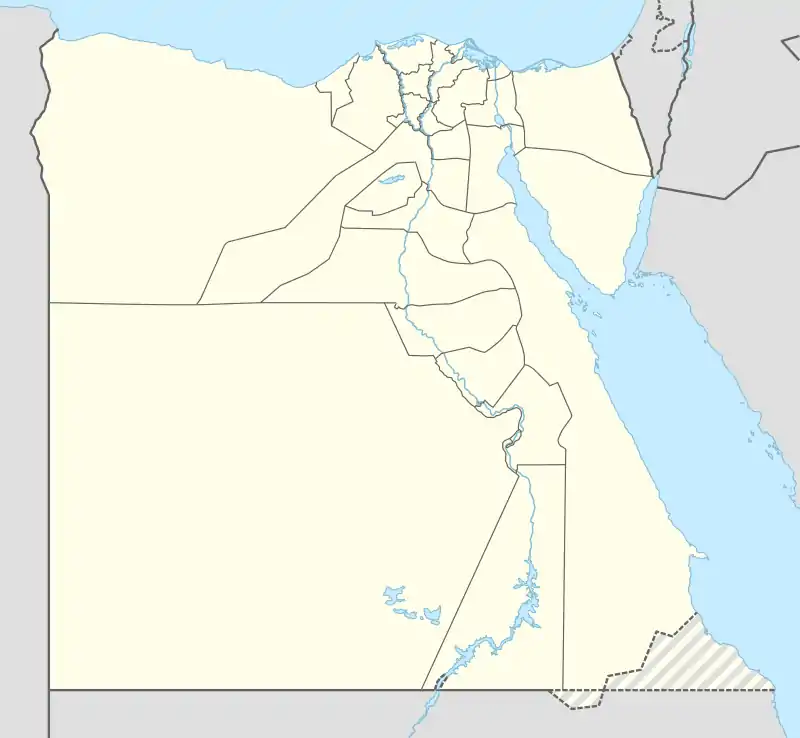Segin al-Kom
*ϣⲉϫⲓⲛ سجين الكوم | |
|---|---|
 Segin al-Kom Location in Egypt | |
| Coordinates: 30°54′31.18″N 31°3′19.71″E / 30.9086611°N 31.0554750°E | |
| Country | |
| Governorate | Gharbia |
| Population (2006) | |
| • Total | 25,623 |
| Time zone | UTC+2 (EST) |
| • Summer (DST) | +3 |
Segin al-Kom (Arabic: سجين الكوم, from Coptic: *ϣⲉϫⲓⲛ, Ancient Egyptian: Škȝn)[1] is a historical village in the Gharbia Governorate of Egypt.
It was known as Lycopolis or Lykopolis (Greek: Λυκούπολις)[2] in the Antiquity, an ancient town in the Sebennytic nome in Lower Egypt.
History
From its appellation, the city was apparently founded by a colony of Osirian priests from the town of Lycopolis in Upper Egypt.
The city is mentioned in the inscription on the Rosetta Stone. It was besieged by Ptolemy V during civil strife:
He went to the stronghold of Shekan [which was] fortified by the enemy with every device... he laid siege to the stronghold in question with a wall around its exterior on account of the enemies who were within it who had inflicted great wrong upon Egypt, having abandoned the path of duty to Pharaoh and duty [to the] gods.[3]
The king "seized the stronghold in question by force in a short time" having cut off the water supply to the fortress and taken control of the irrigation canals.[3]
See also
References
 This article incorporates text from a publication now in the public domain: Smith, William, ed. (1854–1857). Dictionary of Greek and Roman Geography. London: John Murray.
This article incorporates text from a publication now in the public domain: Smith, William, ed. (1854–1857). Dictionary of Greek and Roman Geography. London: John Murray. {{cite encyclopedia}}: Missing or empty|title=(help)
- ↑ Carsten Peust, Konstanz (2010). Koptische Dialektologie anhand ägyptisch-arabischer Ortsnamen. Göttingen. p. 89.
{{cite book}}: CS1 maint: location missing publisher (link) - ↑ "TM Places". www.trismegistos.org. Retrieved 2023-03-25.
- 1 2 Quirke, Stephen; Andrews, Carol (1988). Rosetta Stone Facsimile Drawing With an Introduction and Translation. London: British Museum Publications Ltd. pp. 18–19.